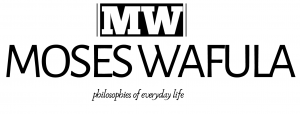In the realm of consumer behavior, learning is a fundamental concept that explains how consumers change their behavior based on their experiences. Among the various forms of learning, the weakest is often considered to be the one that relies on simple stimulus-response connections, known as behavioral learning theories. This form of learning is considered weak because it does not involve the complex mental processes associated with cognitive learning theories, which account for the internal mental activities of consumers as they process and store information.
To delve deeper into this topic, it’s essential to understand the four mental processes that aid consumers in remembering and learning: motivation, cues, response, and reinforcement. These processes interact in a dynamic way to shape consumer behavior and learning.
- Motivation: Motivation is the driving force behind all learning. It is the unfulfilled need that propels consumers to seek out products or experiences that will satisfy their desires. Without motivation, there is no reason for a consumer to engage with a product or brand, making it a crucial element in the learning process.
- Cues: Cues are the stimuli in the environment that guide consumer behavior. They can be anything from a product’s packaging to a catchy jingle in an advertisement. Cues help consumers recognize which behaviors are appropriate in certain situations and which products might fulfill their needs.
- Response: The response is the actual behavior that consumers exhibit in reaction to the cues. It is the action taken, such as purchasing a product or using a service. The response is a critical component of learning because it is the manifestation of the consumer’s decision-making process.
- Reinforcement: Reinforcement occurs after the consumer has responded to a cue. It is the reward or benefit that the consumer receives from their action, such as the pleasure of using a new product or the satisfaction of a need being met. Reinforcement strengthens the learning process by encouraging consumers to repeat favorable behaviors.
The weakest form of learning, as mentioned earlier, does not typically involve these complex processes. Instead, it relies on repetition and the association of a stimulus with a response. This can be seen in classical conditioning scenarios where a consumer might develop a preference for a product simply because it is associated with a positive experience or emotion. However, this type of learning is fragile and can be easily disrupted if the expected outcome is not consistently delivered.
In contrast, stronger forms of learning involve a deeper level of engagement with the product or brand. Cognitive learning theories suggest that consumers are active problem-solvers who seek to understand the world around them. They learn not just through direct experience but also through observation and the internalization of information, which leads to more robust and enduring forms of learning.
In conclusion, while behavioral learning theories may represent the weakest form of learning in consumer behavior, they are still a vital part of the overall learning process. Marketers and advertisers can leverage these theories to create effective campaigns, but for long-term success, it is essential to engage consumers on a deeper cognitive level. By understanding and catering to the four mental processes of learning, businesses can foster a more meaningful and lasting relationship with their consumers.









